Resilience and Recovery: Sendai After the 2011 Tsunami

Introduction: Understanding Sendai’s Journey of Resilience
On March 11, 2011, at 2:46 PM local time, northeastern Japan experienced one of the most powerful earthquakes ever recorded. The 9.0-magnitude Great East Japan Earthquake (東日本大震災, Higashi Nihon Daishinsai) triggered massive tsunami waves that devastated coastal communities throughout the Tohoku region. As the largest city in the affected area, Sendai faced unprecedented challenges in the disaster’s aftermath, with its eastern coastal districts bearing the brunt of the tsunami’s destructive power.
More than a decade later, Sendai has emerged as a remarkable example of urban resilience, recovery, and forward-thinking disaster preparedness. The city has not only rebuilt its damaged infrastructure but has transformed its approach to disaster risk reduction, establishing itself as a global leader in urban resilience planning. For visitors to Sendai today, the disaster memorials, education centers, and revitalized coastal areas offer profound insights into both the tragedy and the extraordinary human capacity for recovery.
This comprehensive guide explores Sendai’s earthquake and tsunami recovery, the lessons learned, and how visitors can engage respectfully with this important aspect of the city’s recent history. Whether you’re interested in disaster risk reduction, urban planning, or simply wish to understand this defining chapter in Tohoku’s history, Sendai offers meaningful opportunities for learning and reflection.
Table of Contents
- The Impact: How the 2011 Disaster Affected Sendai
- Memorial Sites and Educational Facilities
- Arahama Elementary School: Preservation of Disaster Heritage
- Sendai 3/11 Memorial Community Center
- Coastal Area Transformation and Recovery
- Disaster Prevention Innovations
- Community Stories and Oral Histories
- Tourism as Recovery: Supporting Local Businesses
- Practical Information for Visitors
- Etiquette and Respectful Engagement
- Frequently Asked Questions
The Impact: How the 2011 Disaster Affected Sendai
Although Sendai’s city center was largely spared from the tsunami due to its inland location and elevation, the city’s eastern coastal districts experienced devastating impacts:
Geographical Scope of Damage
- Coastal Inundation: Tsunami waves reaching up to 12 meters (40 feet) traveled up to 5 kilometers inland in Sendai’s flat eastern areas
- Affected Districts: Miyagino, Wakabayashi, and Taihaku wards suffered significant damage, particularly in the neighborhoods of Arahama, Fujitsuka, and Gamo
- Agricultural Impact: Approximately 5,800 hectares of farmland were flooded with seawater
- Infrastructure Damage: Sendai Airport was completely flooded; roads, railways, and utility systems were severely compromised
Human Toll
- Loss of Life: Approximately 900 people in Sendai lost their lives in the disaster
- Displacement: Over 100,000 residents were initially evacuated from their homes
- Longer-term Relocation: Thousands of families faced extended stays in temporary housing or permanent relocation
Economic Impact
- Business Disruption: Over 8,000 businesses in Sendai were affected by the disaster
- Employment Challenges: Many coastal industries, particularly fisheries and agriculture, faced severe disruption
- Recovery Costs: The city’s recovery and reconstruction costs exceeded 1 trillion yen (approximately $10 billion USD)
Memorial Sites and Educational Facilities
Sendai has established several significant sites that preserve the memory of the disaster while educating visitors about tsunami risks and preparedness:
Sendai East Road Park (仙台東部道路公園)
- Significance: Elevated expressway that served as a tsunami barrier, significantly reducing the inland reach of the waves
- Viewing Platform: Observation deck providing views of recovered areas
- Information Panels: Educational displays explaining the tsunami’s impact and recovery efforts
- Location: Eastern Sendai, accessible via the Arahama area
- Access: 30-minute drive from central Sendai; bus services available from Sendai Station (Arahama line)
Seaside Memories Museum (海辺の記憶)
- Focus: Small museum preserving artifacts and memories from coastal communities
- Exhibitions: Personal items recovered after the tsunami, before/after photographs
- Oral History: Audio and video testimonies from survivors
- Location: Near Arahama Elementary School
- Hours: 9:30 AM – 4:30 PM (closed Mondays)
- Admission: Free
Sendai 3/11 Memorial Community Center (せんだい3.11メモリアル交流館)
- Purpose: Comprehensive facility for disaster education and community recovery
- Exhibits: Interactive displays explaining the science of tsunamis and earthquake-resistant construction
- Archive: Extensive collection of photographs, videos, and documents
- Location: Located in Arai district
- Hours: 10:00 AM – 5:00 PM (closed third Thursday of each month)
- Admission: Free
- Languages Available: Information in Japanese, English, Chinese, and Korean
Arahama Elementary School: Preservation of Disaster Heritage
One of the most powerful memorial sites is Arahama Elementary School, which has been preserved in its damaged state as a testament to the tsunami’s force and the importance of evacuation preparedness.
Background and Significance
- Historical Context: Built in 1873, Arahama Elementary School served the coastal community for generations
- During the Disaster: 320 people evacuated to the school’s roof and were rescued after enduring a night in freezing conditions
- Preservation Decision: In 2015, Sendai City decided to preserve the building as a disaster heritage site rather than demolish it
Visitor Experience
- Exterior Viewing: The preserved building shows tsunami damage up to the second floor
- Interior Tour: Guided walks through the damaged interior (reservation required for groups)
- Exhibition Room: Displays featuring the school’s history, the tsunami’s impact, and survivor testimonies
- Memorial Space: Area for quiet reflection and remembrance
Practical Information
- Location: Arahama area, approximately 15km from central Sendai
- Hours: 9:30 AM – 4:30 PM (closed Mondays and during New Year holidays)
- Admission: Free
- Access: City bus from Sendai Station East Exit (Arahama line, approximately 40 minutes)
- Guided Tours: Available in Japanese with English audio guides (reservation recommended)
Sendai 3/11 Memorial Community Center
The Sendai 3/11 Memorial Community Center represents the heart of the city’s commitment to disaster education and community healing.
Center Objectives
- Documentation: Preserving the experiences and lessons of the disaster
- Education: Providing disaster preparedness knowledge to future generations
- Community Building: Facilitating connections between affected communities and visitors
- International Exchange: Sharing lessons learned with disaster-prone regions worldwide
Facility Highlights
Exhibition Zone
- Timeline Experience: Chronological journey through the earthquake, tsunami, and recovery periods
- Interactive Displays: Hands-on exhibits explaining tsunami formation and earthquake science
- Recovery Documentation: Photographs and artifacts showing the reconstruction process
- Digital Archives: Touchscreen stations accessing thousands of disaster-related records
Exchange Zone
- Workshop Space: Regular events on disaster preparation and community resilience
- Storytelling Area: Where survivors share personal experiences with visitors
- Community Room: Used for local meetings and recovery planning sessions
Research and Archive
- Document Collection: Preserving firsthand accounts, media coverage, and official records
- Academic Space: Resources for researchers studying disasters and recovery
- Digital Repository: Online database of disaster-related materials
Visitor Programs
- Regular Tours: Daily guided tours explaining the disaster and recovery (Japanese and English)
- Survivor Talks: Scheduled sessions where local residents share their experiences (interpretation available)
- Education Programs: Special workshops for student groups on disaster preparedness
- Temporary Exhibitions: Rotating displays on specific aspects of recovery and resilience
Coastal Area Transformation and Recovery
Sendai’s approach to coastal recovery demonstrates innovative “build back better” principles that balance tsunami protection with community needs and environmental considerations.
Multiple Defense Strategy
Sendai implemented a layered approach to coastal protection:
- Seawall Reconstruction: 7.2-meter high seawalls built along the 10km coastline
- Coastal Forests: Restoration and expansion of protective pine forests
- Elevated Roads: Key roads raised to serve as secondary tsunami barriers
- Land Use Rezoning: Residential areas relocated to higher ground while tsunami-prone areas converted to parks and agriculture
Millennium Hope Hills (千年希望の丘)
- Concept: 15 artificial hills created from disaster debris, serving as both tsunami evacuation points and memorials
- Design: Each hill is planted with disaster-resistant vegetation and equipped with evacuation facilities
- Community Involvement: Local residents participated in tree-planting ceremonies
- Visitor Experience: Hills offer views of recovered coastline, with explanatory panels describing the recovery vision
- Location: Gamo Tideland along Sendai’s eastern coast
- Access: Bus service from Arai Station
Agricultural Revitalization
- Challenge: Over 5,800 hectares of farmland were damaged by seawater inundation
- Recovery Methods: Soil restoration techniques, drainage improvements, and infrastructure rebuilding
- Innovation: Introduction of larger, more efficient field configurations and advanced farming methods
- Success Story: By 2016, approximately 90% of Sendai’s agricultural land had returned to productivity
- Agritourism Opportunities: Farm visits and direct sales facilities available in eastern Sendai
Coastal Ecology Restoration
- Gamo Tidal Flat Restoration: Recovery of important bird habitat and coastal ecosystem
- Monitoring Programs: Ongoing scientific assessment of ecological recovery
- Nature Trails: Newly established paths allowing visitors to observe recovering ecosystems
- Guided Eco-Tours: Available through Sendai Tourism Bureau (seasonal)
Disaster Prevention Innovations
Sendai has become a global leader in disaster risk reduction, implementing numerous innovations that are studied by cities worldwide.
City-Level Preparedness Measures
- Comprehensive Evacuation Planning: Revised evacuation routes, signage, and procedures
- Community Disaster Manual: Distributed to all households with multilingual versions available
- Early Warning Systems: Enhanced seismic and tsunami detection networks
- Annual Drills: City-wide evacuation exercises held on March 11th anniversary and National Disaster Prevention Day (September 1st)
Infrastructure Innovations
- Tsunami-Resistant Buildings: New construction in coastal areas incorporates specific design elements
- Emergency Power Systems: Critical facilities equipped with redundant power supplies
- Disaster-Resistant Information Networks: Multiple communication channels to maintain connectivity during emergencies
- Smart City Technologies: IoT sensors monitoring infrastructure condition and detecting potential hazards
Sendai Framework for Disaster Risk Reduction
Following the 2011 disaster, Sendai hosted the UN World Conference on Disaster Risk Reduction in 2015, resulting in the adoption of the “Sendai Framework” – a global agreement on disaster preparedness:
- International Recognition: Sendai’s recovery approaches have been incorporated into global best practices
- Knowledge Exchange: The city regularly hosts international delegations studying disaster resilience
- Academic Partnerships: Collaboration with universities worldwide on disaster research
- Sendai Resilience Center: Facility dedicated to sharing lessons learned with other disaster-prone regions
Visitor Learning Opportunities
- Sendai Science Museum: Special exhibition on earthquake science and preparedness
- Tohoku University IRIDeS: International Research Institute of Disaster Science offers public lectures
- Disaster Prevention Workshops: Hands-on sessions available for visitors by reservation
- Mobile App: “Sendai Disaster Navigation” application providing evacuation information (available in multiple languages)
Community Stories and Oral Histories
The human dimension of recovery is preserved through numerous oral history projects and community storytelling initiatives.
Survivor Testimony Programs
- Kataribe (Storyteller) Sessions: Scheduled talks by survivors at memorial facilities
- Digital Archives: Recorded interviews accessible at the Sendai 3/11 Memorial Community Center
- School Outreach: Survivors visit educational institutions to share experiences with younger generations
- Training Programs: Ongoing efforts to prepare new storytellers as the survivor population ages
Representative Personal Stories
While respecting privacy, several community members have chosen to share their recovery journeys publicly:
Natori Fishermen’s Cooperative
The story of how local fishermen rebuilt their industry after losing vessels, equipment, and processing facilities. Their cooperative approach to sharing remaining resources allowed fishing operations to resume within months.
Urban Farmers of Arahama
Former residents who converted their residential properties to agricultural use after relocation, maintaining connections to ancestral land while adapting to new realities.
Takata Matsubara Pine Tree Restoration Volunteers
Community members dedicated to restoring the coastal pine forests that historically protected settlements from ocean winds and, to some extent, tsunami waters.
Community-Led Tours
- Guided Walks: Local resident-led tours of recovered neighborhoods
- Memory Mapping: Projects identifying locations of pre-disaster landmarks and communities
- Recovery Timeline Tours: Visits to sites showing different stages of the reconstruction process
Tourism as Recovery: Supporting Local Businesses
Tourism plays a vital role in the ongoing recovery of Sendai and the Tohoku region, providing economic opportunities while preserving disaster memory.
Ethical Disaster Tourism
- Respectful Engagement: Tours designed with community input and sensitivity
- Economic Impact: Visitor spending directly supports affected communities
- Educational Focus: Emphasis on learning rather than spectacle
- Community Benefit: Tour operators that reinvest portions of proceeds in local recovery
Local Products Supporting Recovery
- Kokoppe Sweets: Confectionery business started by women displaced by the tsunami
- Reimei Sake: Local brewery that rebuilt after complete destruction
- Arahama Crafts Collective: Artisanal products created by former residents of coastal areas
- Recovery Market: Regular events featuring products from recovering businesses
Recommended Responsible Tourism Operators
- Sendai Tourism Bureau Recovery Tours: Official programs developed with community consultation
- Miyagi Prefecture Recovery Tourism Association: Network of local guides with direct experience
- Peace Boat Disaster Relief Volunteer Center: Non-profit organizing educational visits
- Tohoku University Volunteer Network: Student-led tours focusing on scientific aspects of recovery
Practical Information for Visitors
Planning Your Visit to Disaster-Related Sites
- Timing: Allow at least a half-day to visit the main memorial sites
- Transportation: Consider renting a car for coastal areas or use the dedicated bus services
- Tour Options: Both self-guided and group tours available (advance booking recommended for guided experiences)
- Seasonal Considerations: Eastern coastal areas have limited shelter; visit in good weather conditions
Recommended Itineraries
Half-Day Experience
- Sendai 3/11 Memorial Community Center (2 hours)
- Arahama Elementary School (1.5 hours)
Full-Day Immersion
- Sendai 3/11 Memorial Community Center (2 hours)
- Lunch at recovery-supporting restaurant
- Arahama Elementary School (1.5 hours)
- Millennium Hope Hills and coastal recovery areas (2 hours)
Two-Day Learning Experience
Day 1: Sendai’s recovery sites
Day 2: Visit to other affected areas in Miyagi Prefecture (Ishinomaki, Onagawa, or Minamisanriku)
Transportation Options
- Dedicated Memorial Bus: “Earthquake Learning Bus Tour” operates on weekends and holidays
- Departs from Sendai Station East Exit
- Includes main memorial sites with English audio guide available
- Reservation required: Can be booked through Sendai Tourism Website
- Public Transportation:
- Bus #13 from Sendai Station to Arai area (for Memorial Community Center)
- Bus #66 to Arahama area (requires some walking)
- Taxi Services:
- Approximate cost to coastal areas: 4,000-5,000 yen one-way from central Sendai
- Some drivers offer informal guided commentary
- Rental Car:
- Recommended for flexibility in visiting multiple sites
- Navigation apps have been updated to reflect post-disaster road changes
Etiquette and Respectful Engagement
Visiting disaster-affected areas requires sensitivity and respect. The following guidelines will help ensure your visit is appropriate:
General Principles
- Remember the Human Impact: These sites represent places where many people lost their lives, homes, and livelihoods
- Follow Official Pathways: Stick to designated visitor areas rather than exploring independently
- Support Local Economy: Purchase meals, refreshments, or souvenirs in the area when possible
- Minimize Disruption: Keep noise levels appropriate, especially near memorial spaces
Photography Guidelines
- Public Spaces: Photography is generally permitted at official memorial sites
- Private Property: Avoid photographing private homes or businesses without permission
- People: Ask before photographing local residents, especially those sharing their stories
- Memorial Offerings: Do not photograph or disturb personal items left at memorial sites
Interacting with Survivors
- Respect Boundaries: Not all residents wish to discuss their experiences
- Listen More Than Speak: When someone shares their story, focus on understanding
- Avoid Comparisons: Each disaster is unique; comparing to other events can seem dismissive
- Appropriate Questions: Focus on recovery and resilience rather than traumatic details
- Express Gratitude: Thank those who share their experiences for their openness
Supporting Recovery
- Souvenir Purchases: Buy locally-made products from recovery-supporting businesses
- Donations: Consider contributing to ongoing recovery projects if appropriate
- Sharing Knowledge: Help spread accurate information about recovery when you return home
- Return Visits: Consider returning in future years to witness ongoing progress
Frequently Asked Questions
General Questions
Q: Is it appropriate for tourists to visit disaster sites in Sendai?
A: Yes, when done respectfully. Local communities have created these memorial spaces specifically for education and remembrance. Many residents actively participate in sharing their experiences, viewing this as an important way to honor those lost and ensure lessons are passed to future generations.
Q: How safe is visiting Sendai today?
A: Sendai is completely safe for visitors. The city’s infrastructure has been rebuilt with enhanced earthquake resilience. New warning systems and evacuation procedures are in place throughout the region.
Q: Has Sendai completely recovered from the disaster?
A: Physical reconstruction of infrastructure is largely complete, and population levels have returned to pre-disaster numbers. However, social and psychological recovery continues for many affected individuals. The concept of “recovery” is understood as an ongoing process rather than a final state.
Logistical Questions
Q: Do I need to book memorial site visits in advance?
A: Individual visits to sites like Arahama Elementary School don’t require advance booking unless you’re part of a large group. However, guided tours and storytelling sessions should be reserved in advance.
Q: Are there English-language resources available at memorial sites?
A: Yes, major memorial facilities offer information in English, Chinese, and Korean. The Sendai 3/11 Memorial Community Center has the most comprehensive multilingual support, including English-speaking staff on most days.
Q: How much time should I allocate for visiting these sites?
A: A meaningful visit to the main sites (Memorial Community Center and Arahama School) requires at least 4 hours, including transportation time from central Sendai. A full day allows for a more comprehensive experience including coastal recovery areas.
Educational Questions
Q: How high was the tsunami in Sendai?
A: Tsunami heights varied along the coast, but generally reached 8-12 meters (26-40 feet) in Sendai’s coastal areas. The water traveled up to 5 kilometers inland due to the flat topography of the Sendai Plain.
Q: What were the most important lessons learned from the disaster?
A: Key lessons include the limitations of hard infrastructure like seawalls, the importance of evacuation planning and education, the value of multiple defensive layers, and the need for comprehensive community involvement in recovery planning.
Q: How has the disaster changed Japan’s approach to tsunami risk?
A: Japan has revised its approach to emphasize both physical protections and human behaviors. Rather than relying solely on seawalls, the current strategy incorporates multiple protective layers, improved warning systems, enhanced evacuation planning, and greater emphasis on public education about appropriate responses.
Conclusion: Enduring Lessons and Ongoing Resilience
Sendai’s recovery journey offers profound insights into human resilience, community strength, and innovative approaches to rebuilding after catastrophic disaster. More than a decade after the Great East Japan Earthquake and Tsunami, the city stands as both a memorial to what was lost and a testament to what can be achieved through collective determination and thoughtful planning.
For visitors, engaging with Sendai’s disaster heritage provides more than historical understanding—it offers lessons relevant to communities worldwide facing increasing climate-related disasters and other natural hazards. The city’s recovery demonstrates how tragedy can catalyze positive transformation, from improved physical infrastructure to strengthened social bonds and more sustainable development patterns.
Perhaps most importantly, Sendai’s approach to memorialization balances honoring the past with looking toward the future. By preserving key sites like Arahama Elementary School while rebuilding vibrant communities, the city ensures that the memories and lessons of 2011 will guide and inform generations to come.
As you explore these sites, you participate in this ongoing process of remembrance and learning—carrying forward important lessons about preparation, response, and recovery that extend far beyond northeastern Japan to benefit vulnerable communities worldwide.
Last updated: March 2025
Author: [Your Media Name]
For more information on disaster learning tours in Sendai, visit the Sendai Tourism Information Center at Sendai Station or contact the Sendai 3/11 Memorial Community Center directly.

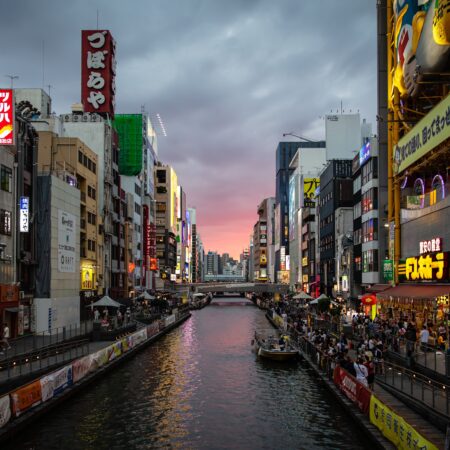
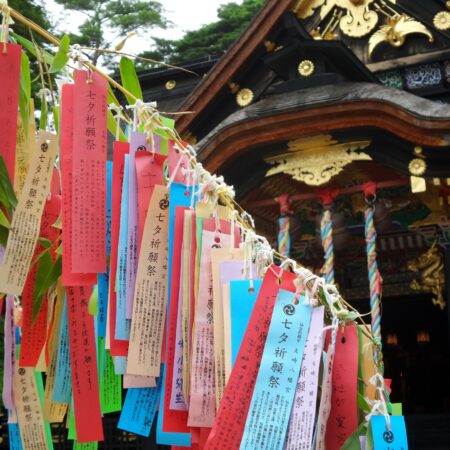
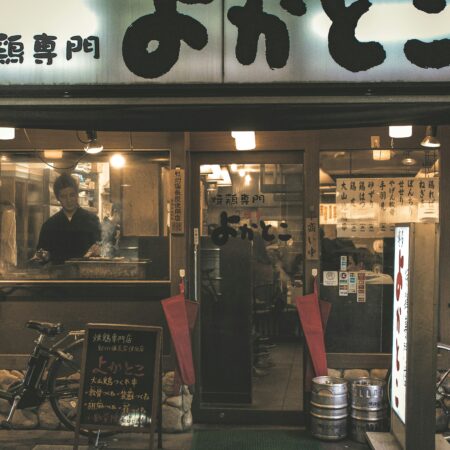
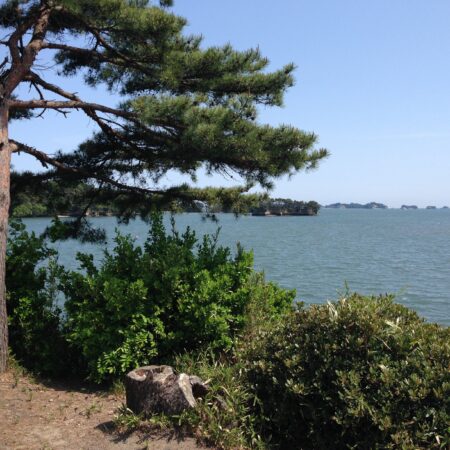
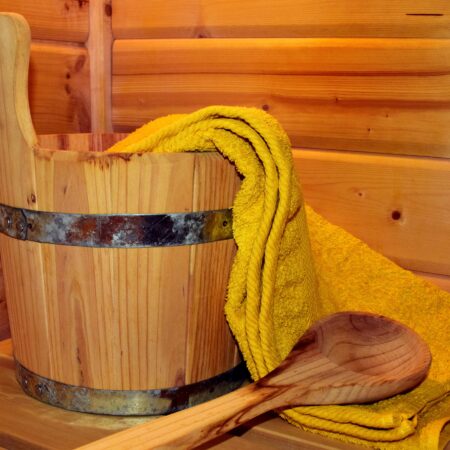
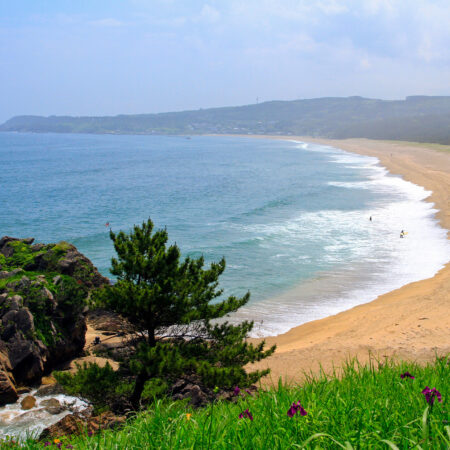

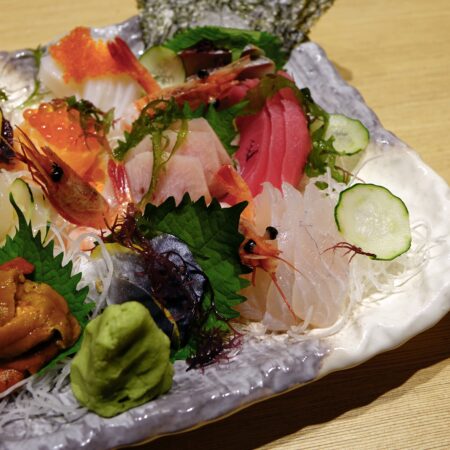
コメント